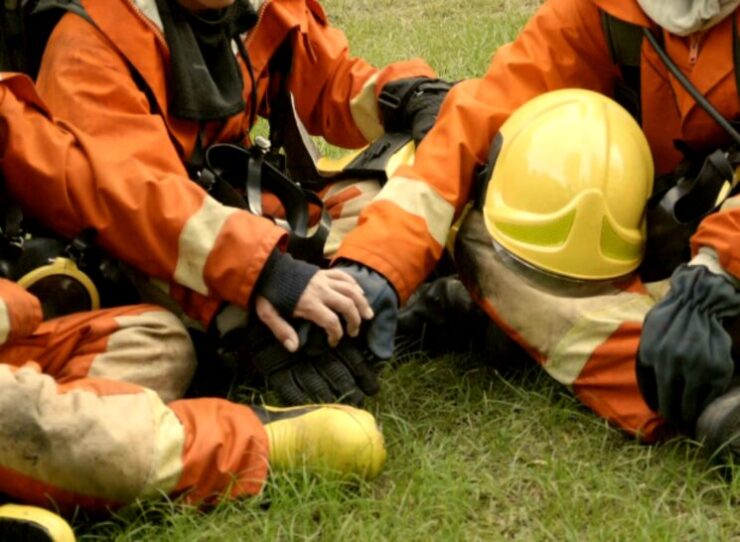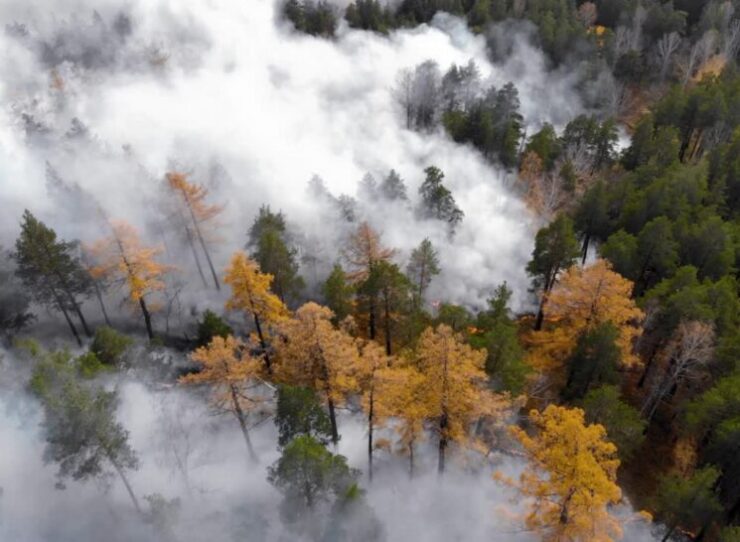In the grand tapestry of nature, forests stand as ancient sentinels, their roots delving deep into the earth, their branches reaching out to the sky. They are the lungs of our planet, the homes of countless species, and the source of life-sustaining resources for humanity. Yet, these majestic guardians face a relentless adversary, one that threatens to consume their very essence and leave nothing but ashes in its wake. This enemy is not a predator, nor a disease, but a force as old as the forests themselves – fire.
Next to irresponsible forestry practices, forest fires are the most destructive enemy of our forests. They are the silent, creeping doom that can transform a verdant paradise into a charred wasteland in the blink of an eye. Forest fires are not just a natural disaster, but a poignant reminder of the delicate balance that exists between humanity and nature. They are a testament to the fact that our actions, whether intentional or inadvertent, can have far-reaching consequences.
How Forest Fires Start
Forest fires always start in one of two ways – naturally caused or human-caused. Natural fires are generally started by lightning, with a very small percentage started by spontaneous combustion of dry fuel such as sawdust and leaves.
On the other hand, human-caused fires can be due to any number of reasons. Some classifications include smoking, recreation, equipment, and miscellaneous. Human-caused fires constitute the greater percentage of forest fires in our forests, but natural fires constitute the great majority of the total area burned. This is because human-caused fires are usually detected early in their duration, and therefore they are usually contained easily. Natural fires, on the other hand, can burn for hours before being detected by firefighting authorities.
How Forest Fires Burn

There are three elements that are required for a forest fire to burn: Heat, Oxygen, and Fuel. This is the so-called “fire triangle”. Without all three of these elements, the fire will go out.
Furthermore, the fire will spread in the direction of the most abundant supply of the three elements, while its rate of combustion is usually limited by one of the three elements. Once the fire enters the combustion stage, there are three main types of classifications for the fire.
A smoldering fire is one that emits smoke but no flame and is rarely self-sustained. A fire is classified as flaming combustion when flames are present. Charcoal can be formed in the absence of oxygen with this type of fire. Glowing combustion is a later stage of the fire and is characterized by a slower rate of combustion and blue flame. Forest fires can also be classified by what part of the forest they burn in.
Types
- Ground fires occur on the ground, often below the leaves.
- Surface occur on the surface of the forest up to 1.3 meters high.
- Crown fires are the most dangerous fires and can spread the fastest. They occur in the tops of the trees. They can be: (a) dependent upon surface fires to burn the crowns, (b) active in which they occur at the same rate as surface fires, or (c) the most destructive, independent, where fire can “jump” from crown to crown.
It is not uncommon for two or three types of fires to occur simultaneously.
Fighting Fires
In the battle against forest fires, one element often goes unnoticed, yet it is as crucial as the water used to douse the flames – communication. This invisible lifeline, threading through every stage of firefighting, is the key to a swift and effective response.
The Importance of Early Detection
The first note in this symphony of communication is the detection and reporting of a fire. The sooner a fire is detected, the easier it is to contain and extinguish. Early detection allows for a rapid response, preventing the fire from gaining the momentum that can transform it into an unstoppable force.
However, detection is only half the battle. Once a fire is spotted, it is imperative that the information reaches the right hands – the firefighting authorities. This is where the role of the community becomes paramount. Every individual, from a hiker spotting a wisp of smoke to a local resident noticing an unusual glow, can become a vital link in this chain of communication.
The Role of Technology in Fire Detection and Communication
In our modern age, technology also plays a significant role in early detection and communication. Satellite imagery, drone surveillance, and advanced fire detection systems can spot potential fire outbreaks, often before they’re visible to the naked eye. These systems can automatically alert authorities, ensuring a swift response.
Coordinating the Firefighting Response
Once the alarm is raised, the next movement in this symphony begins – coordinating the response. Firefighters, equipment, and resources must be mobilized and directed towards the fire. This stage requires clear, concise communication between multiple parties – from the central command coordinating the response to the pilots flying water-bombing aircraft.
The Challenge of Terrain and Transportation
The challenge of reaching the fire cannot be understated. Forest fires often occur in remote, rugged terrain, far from conventional transport routes. Firefighters may need to be airlifted into the area, or hike through difficult terrain carrying heavy equipment. Coordinating these logistics is a complex task, requiring precise communication and planning.
Applying Suppression Methods
Once the firefighters reach the fire, the strategy for combating it must be tailored to the specific fire. Ground fires, surface, and crown each require different suppression methods. This decision-making process relies on accurate, real-time information about the fire’s behavior, the local topography, and weather conditions. Again, effective communication is key.
Transport and Suppression

One difficulty in fighting forest fires is transporting the firefighters to the fire. Obviously, wildland fires often occur in rather rugged terrain, so fire fighters often have to be transported in by air and then walk with their equipment overland. Once crews are to the fire, the suppression method they use depends on the type of fire.
- Ground are often best controlled by digging trenches in the soil layer.
- Portable water backpacks and firebreaks are often the most effective methods at controlling surface fires.
- Lastly, if a fire escalates to crown fire, aerial support is used to suppress the fire with fire retardant chemicals and/or water. However, these fires are often very dangerous and human life always comes first in fire fighting; sometimes these fires are just allowed to burn until they run out of dry fuel.
The Human Element in Forest Firefighting: Safety First
The human element is a critical factor in the fight against forest fires. Firefighters, the brave individuals who face these destructive forces head-on, must prioritize their safety to effectively combat the flames and protect our forests.
Firefighting is a dangerous profession, and forest firefighting is particularly challenging due to the unpredictable nature of wildfires and the often remote and rugged locations in which they occur. Firefighters must be physically fit, mentally prepared, and thoroughly trained in a variety of skills, including fire behavior, suppression techniques, survival skills, and emergency medical procedures.
Safety begins with proper personal protective equipment (PPE). Firefighters wear specially designed gear that protects them from the intense heat and flames of a wildfire. This includes fire-resistant clothing, helmets, gloves, boots, and sometimes even shelters that can be deployed in emergency situations.
Communication is another crucial aspect of firefighter safety. Firefighters must maintain constant communication with each other and with their command center. This allows them to stay informed about changing conditions, such as shifts in the wind that could alter the fire’s direction, and to coordinate their efforts effectively.
Firefighters also need to stay hydrated and take breaks to avoid exhaustion. Fighting wildfires is physically demanding work, and it’s often done in hot, dry conditions that can lead to dehydration and heat-related illnesses.
Preventing: Strategies and Recommendations
- Be Aware of Fire Restrictions: In many areas, especially those prone to wildfires, there may be restrictions or bans on activities that could start a fire. This can include things like burning yard waste, using charcoal grills, or even lighting fireworks. Always check for any fire restrictions in your area.
- Dispose of Cigarettes Properly: One common cause of wildfires is improperly disposed of cigarettes. If you smoke, make sure to put out your cigarettes completely and dispose of them in a closed container.
- Practice Safe Campfire Habits: If you’re camping, make sure to keep your fire small and manageable. Never leave it unattended, and put it out completely before leaving your campsite.
- Maintain Your Property: If you live in an area prone to wildfires, maintaining your property can help reduce the risk. This can include clearing dead vegetation, keeping your grass and shrubs well-watered, and creating a “defensible space” around your home that’s free of flammable materials.
- Use Equipment Safely: Equipment like chainsaws, lawnmowers, and tractors can create sparks and start a fire. Always use this equipment safely, and avoid using it on dry, windy days when a spark could quickly spread.
- Report Unattended Fires: If you see an unattended or out-of-control fire, report it to the authorities immediately. Even a small fire can quickly spread and become a dangerous wildfire.
Final Words
In the ceaseless cycle of nature, the battle against forest fires is a testament to resilience and the indomitable spirit of those who protect our forests. This fight is not just against the flames, but for balance and harmony between humanity and nature. Each of us plays a role, from the frontline firefighters to individuals making responsible choices at home.
Even as we face the daunting challenges of climate change and human-induced fires, we are reminded of our capacity for hope, resilience, and the promise of new beginnings. The forests, bearing the scars of fires, stand as enduring sentinels, their roots deep in the earth, branches reaching for the sky, embodying the eternal vigil in the grand tapestry of life.

